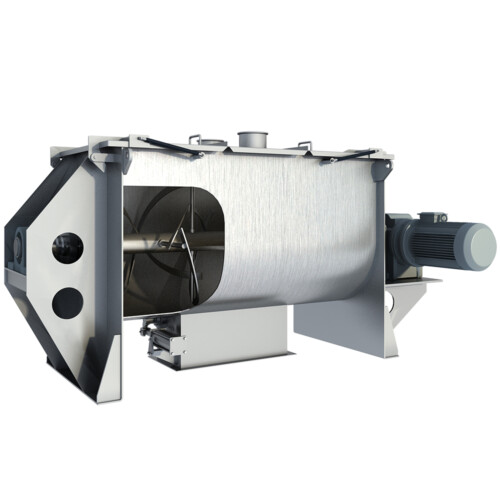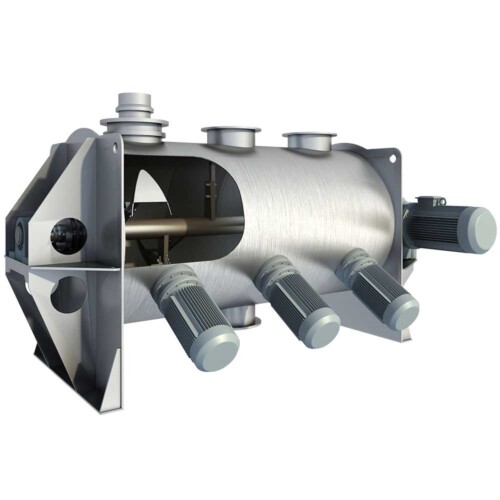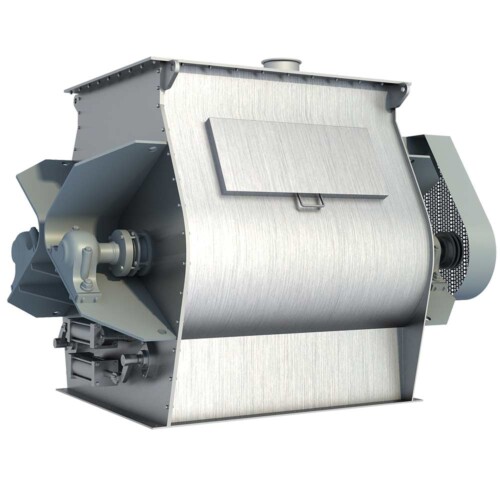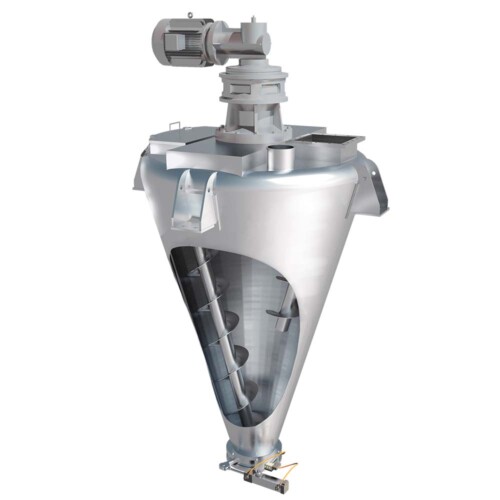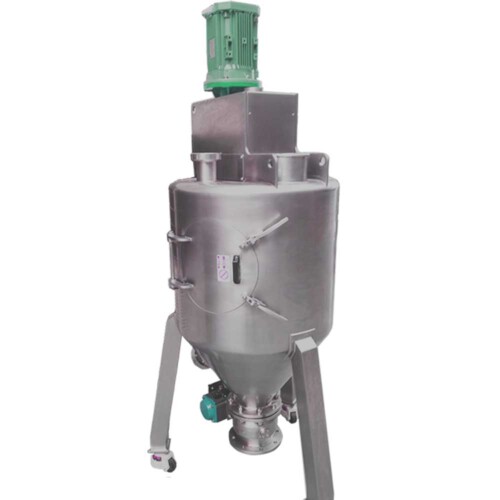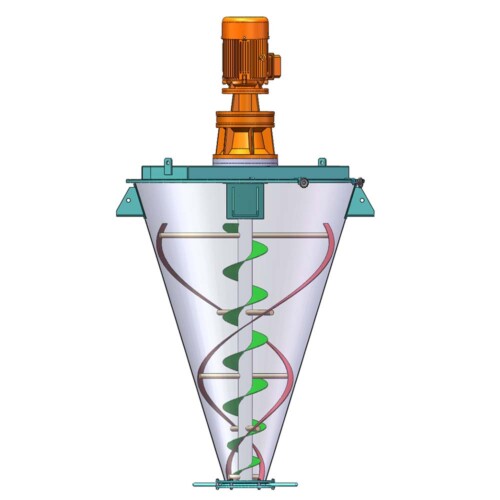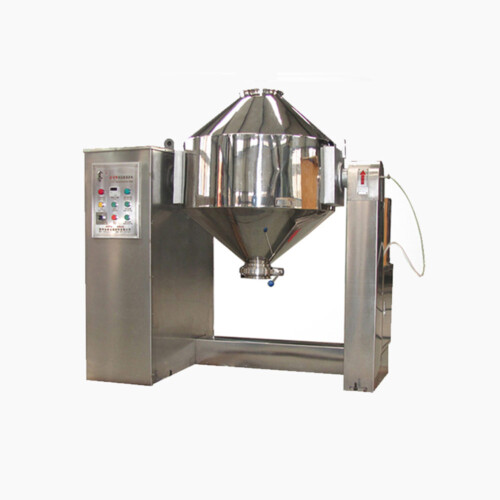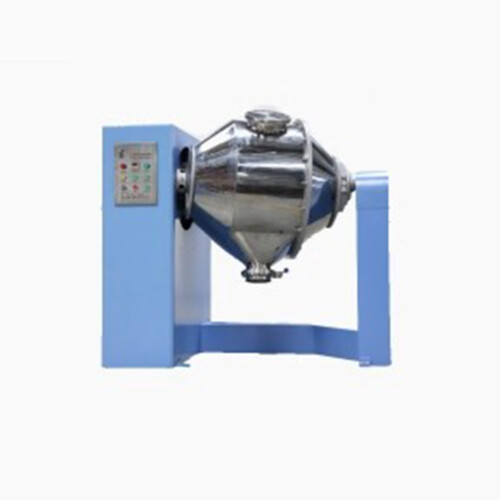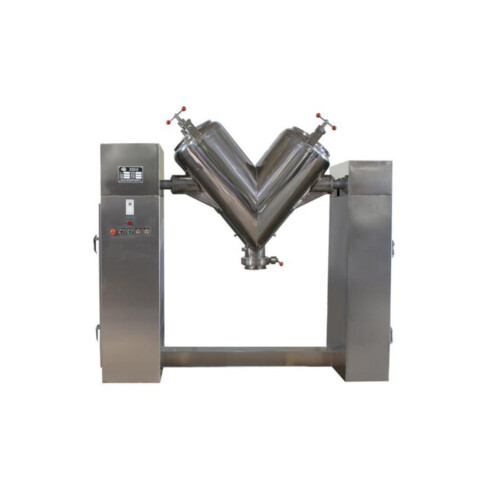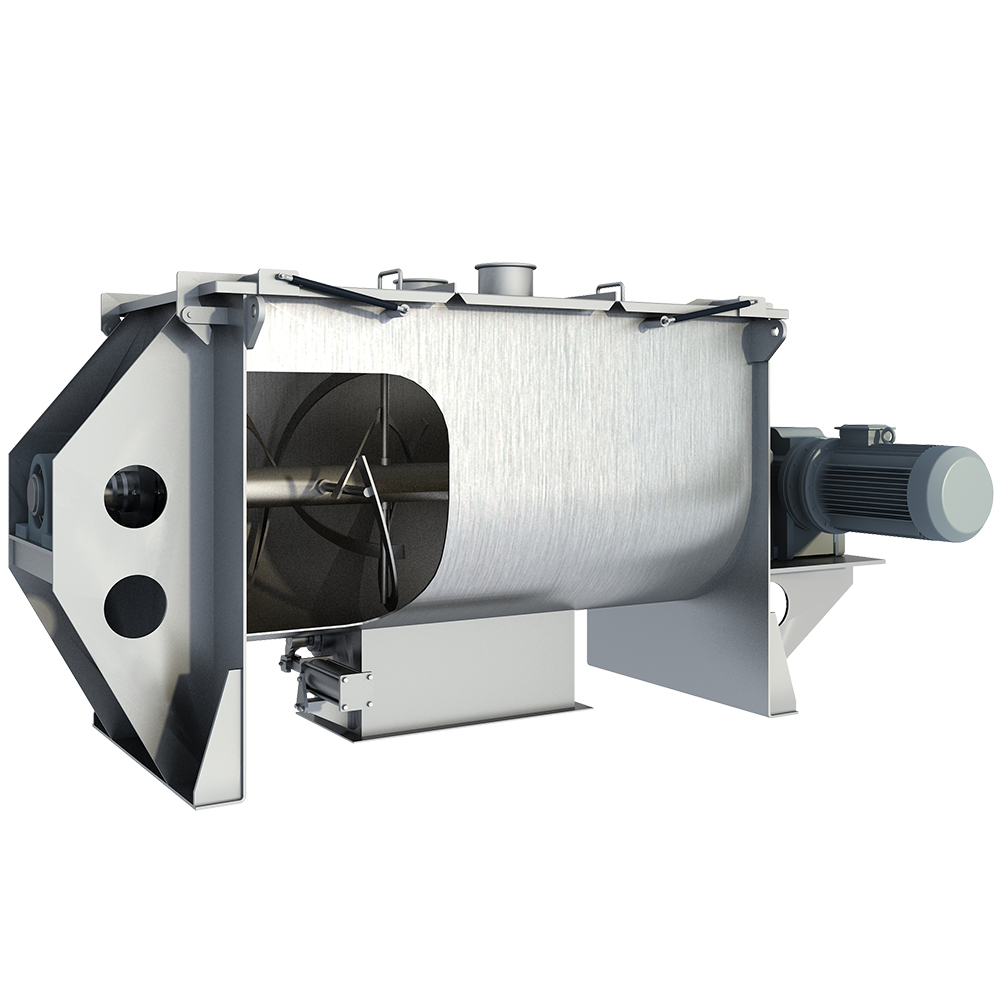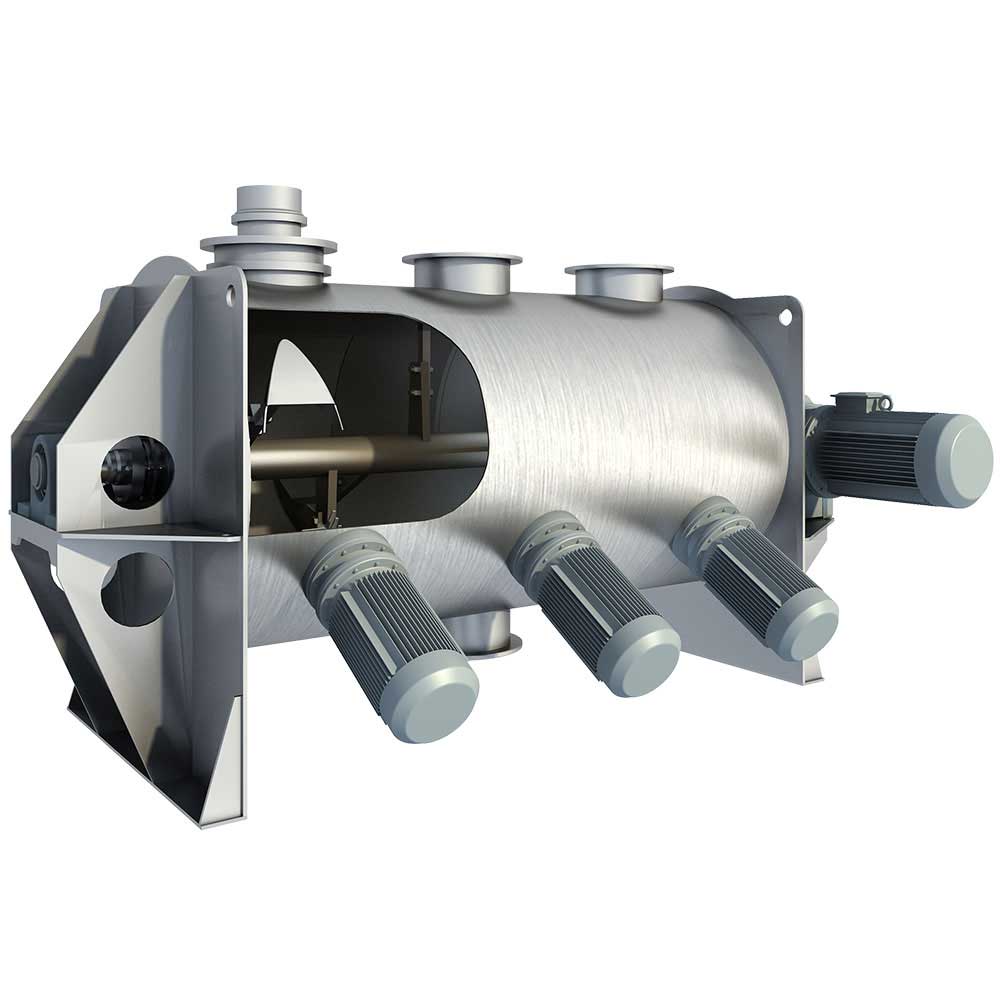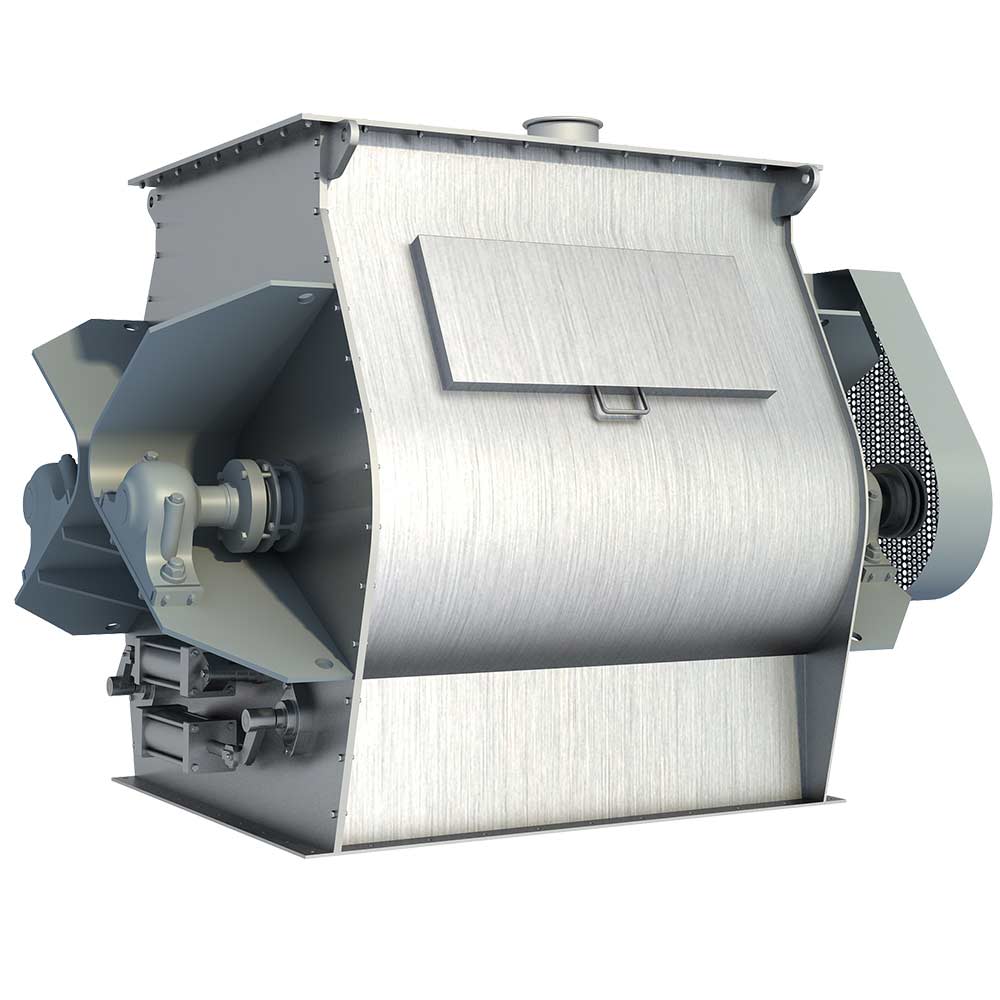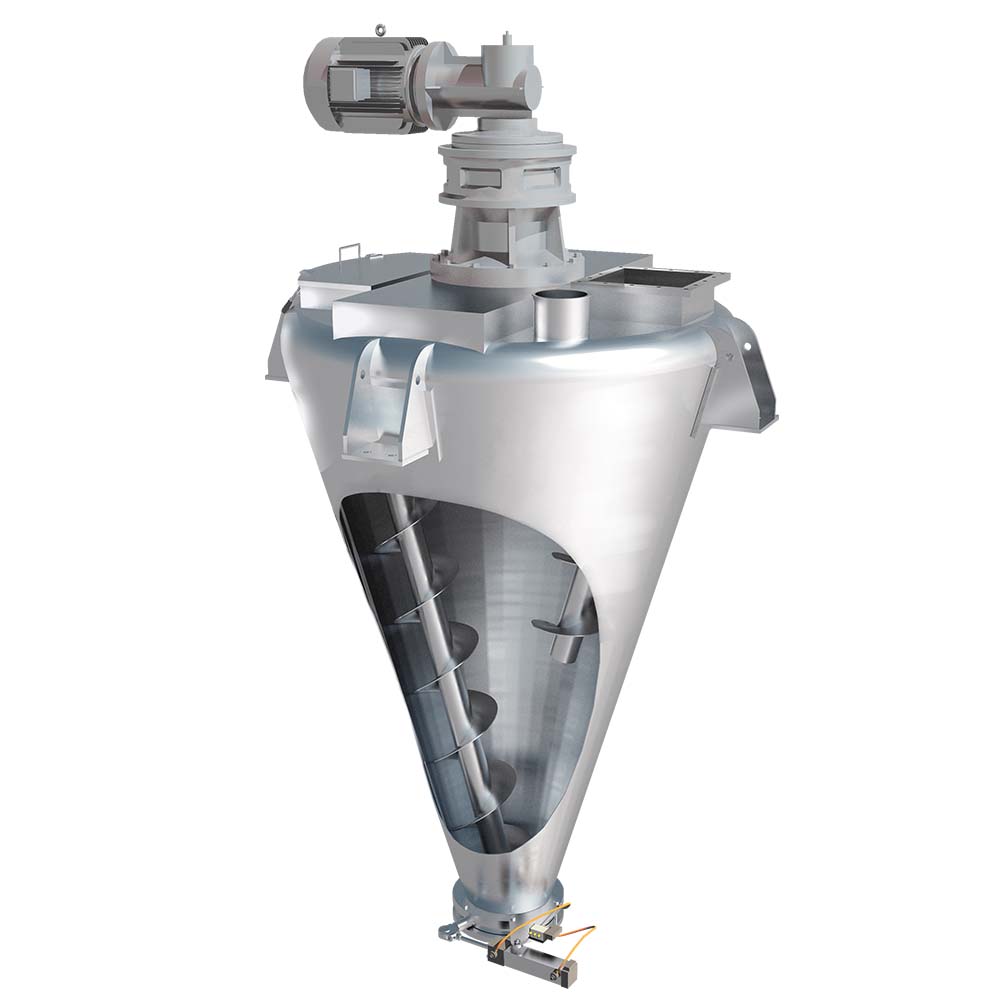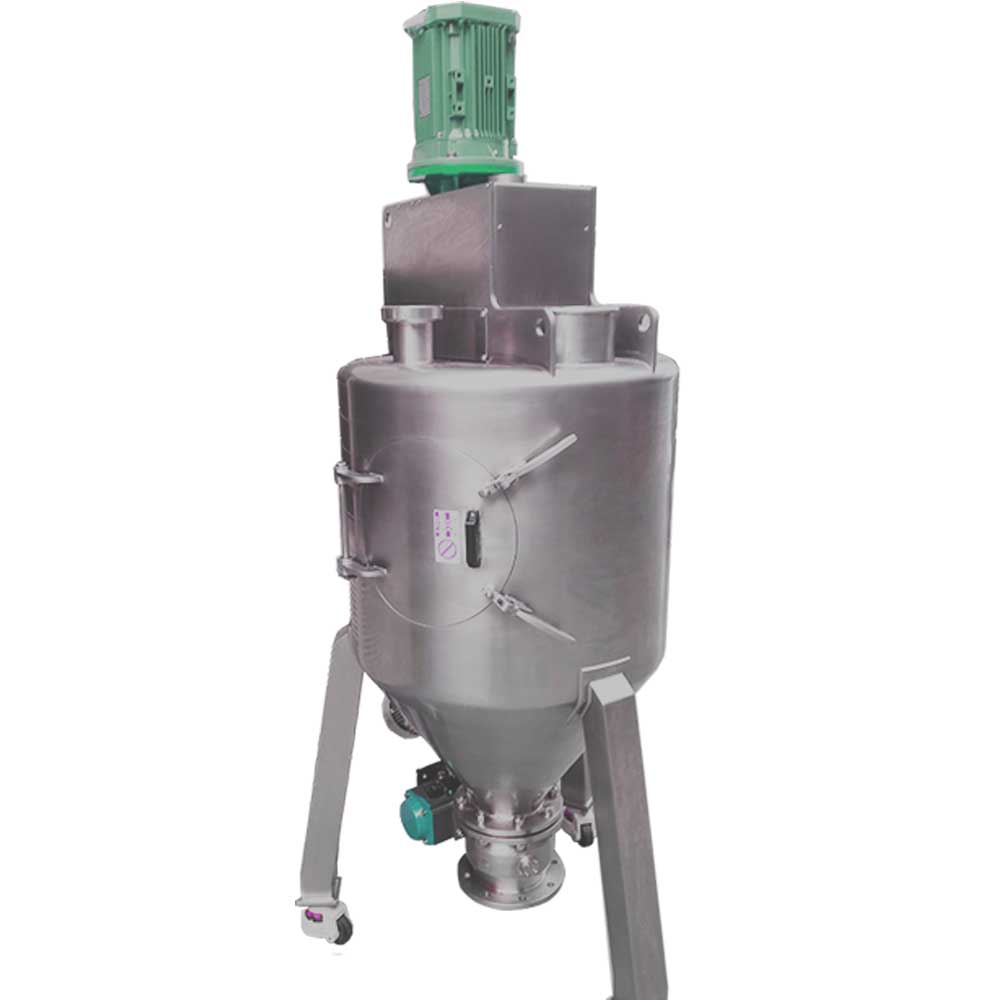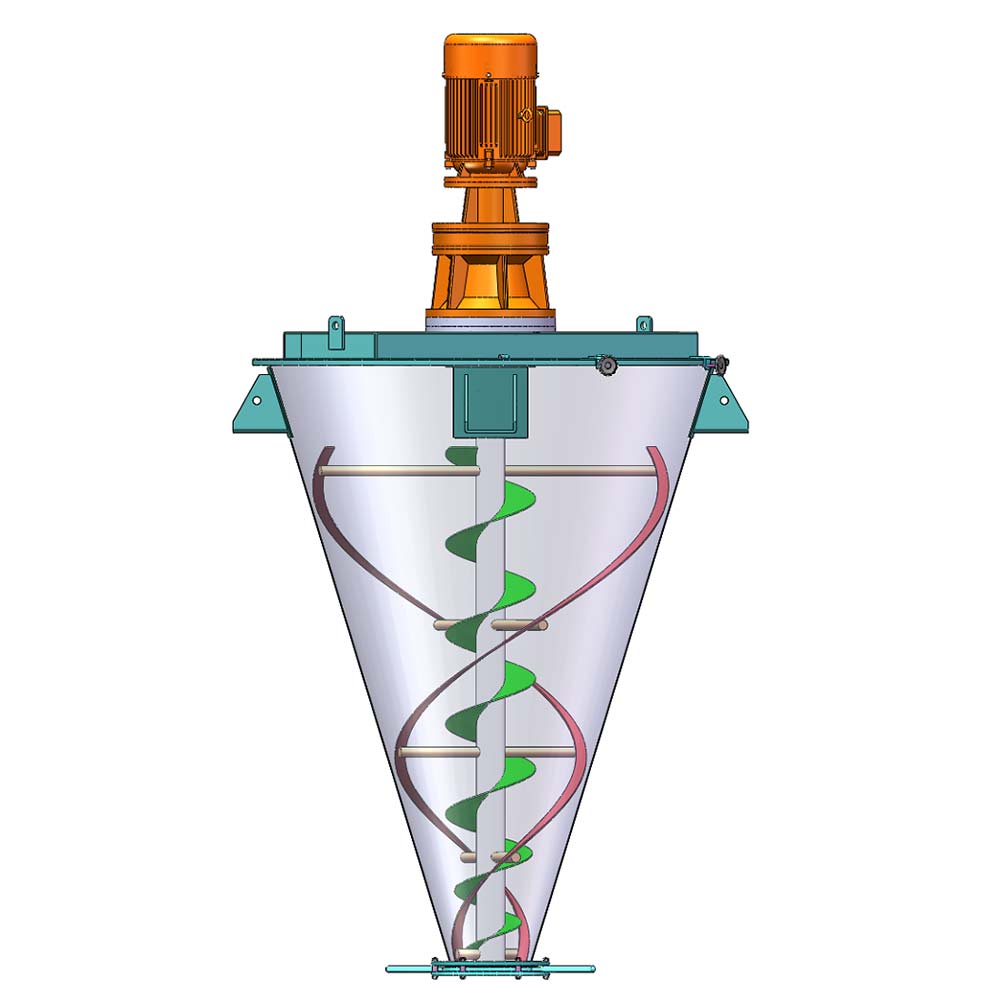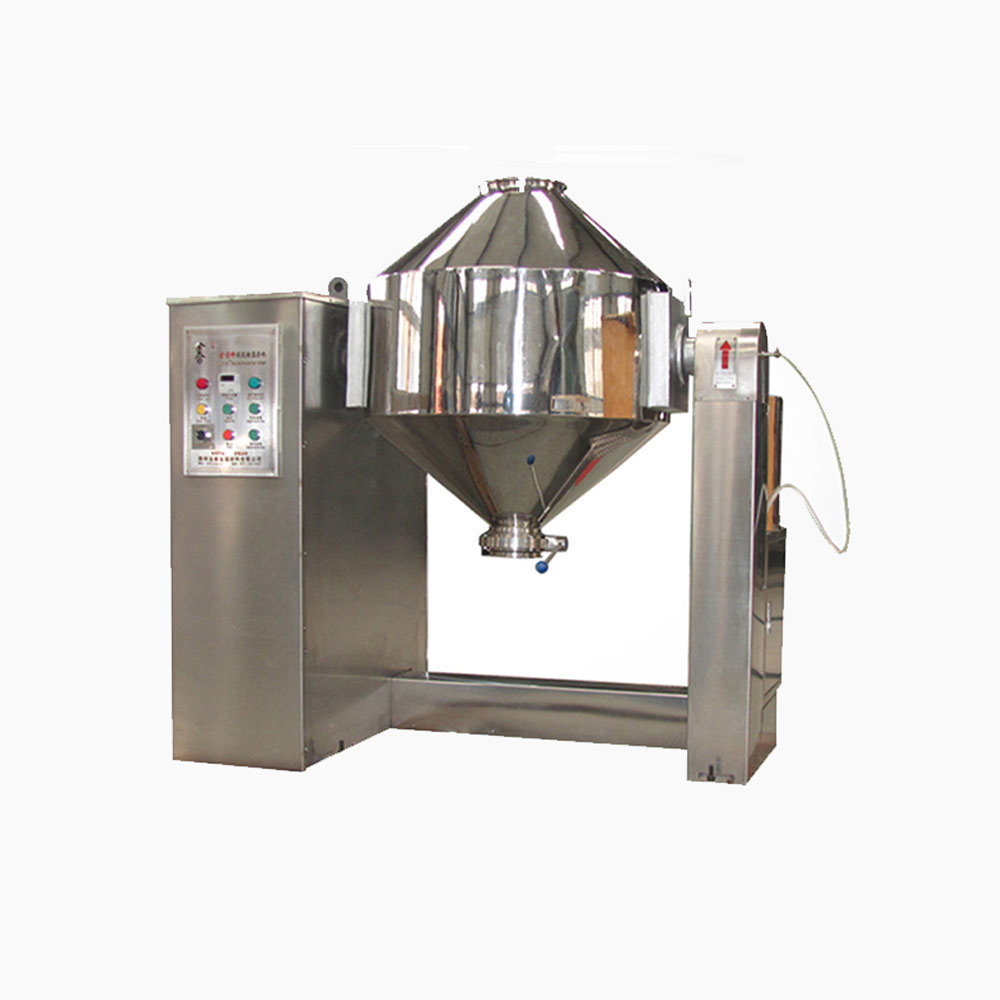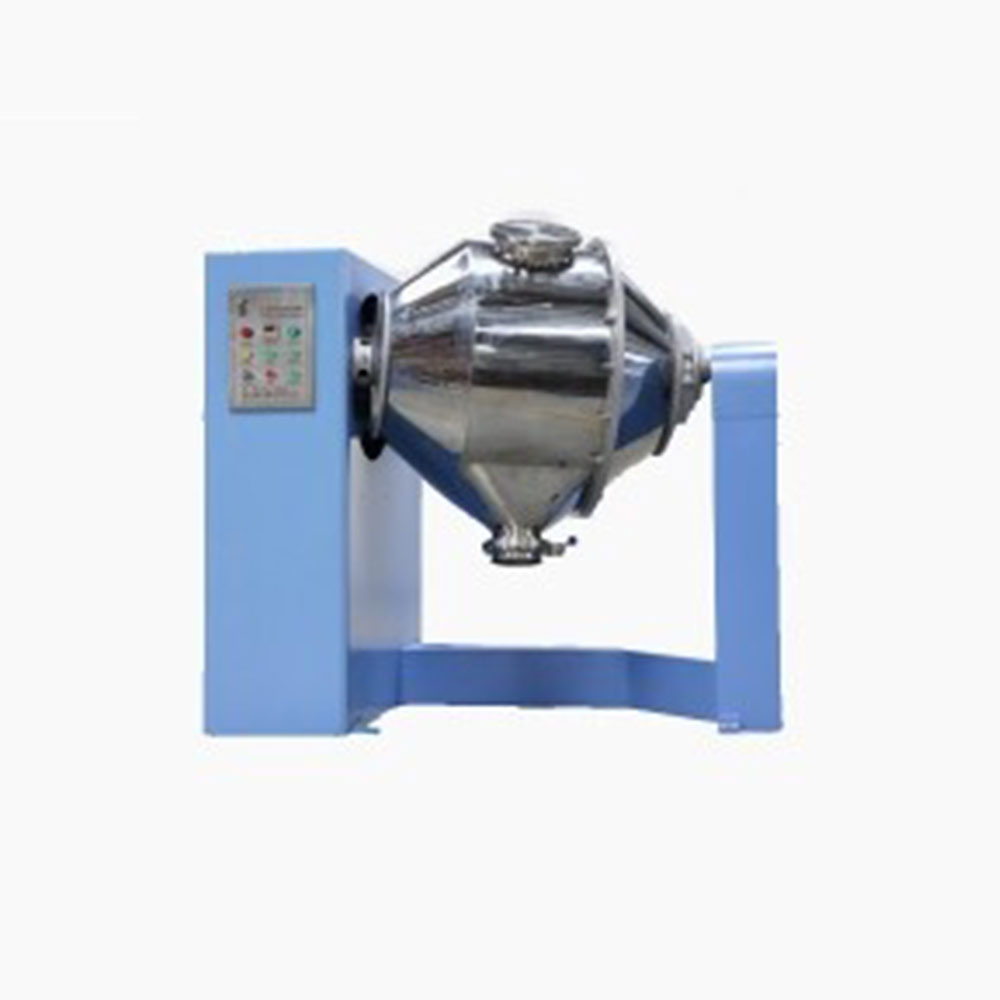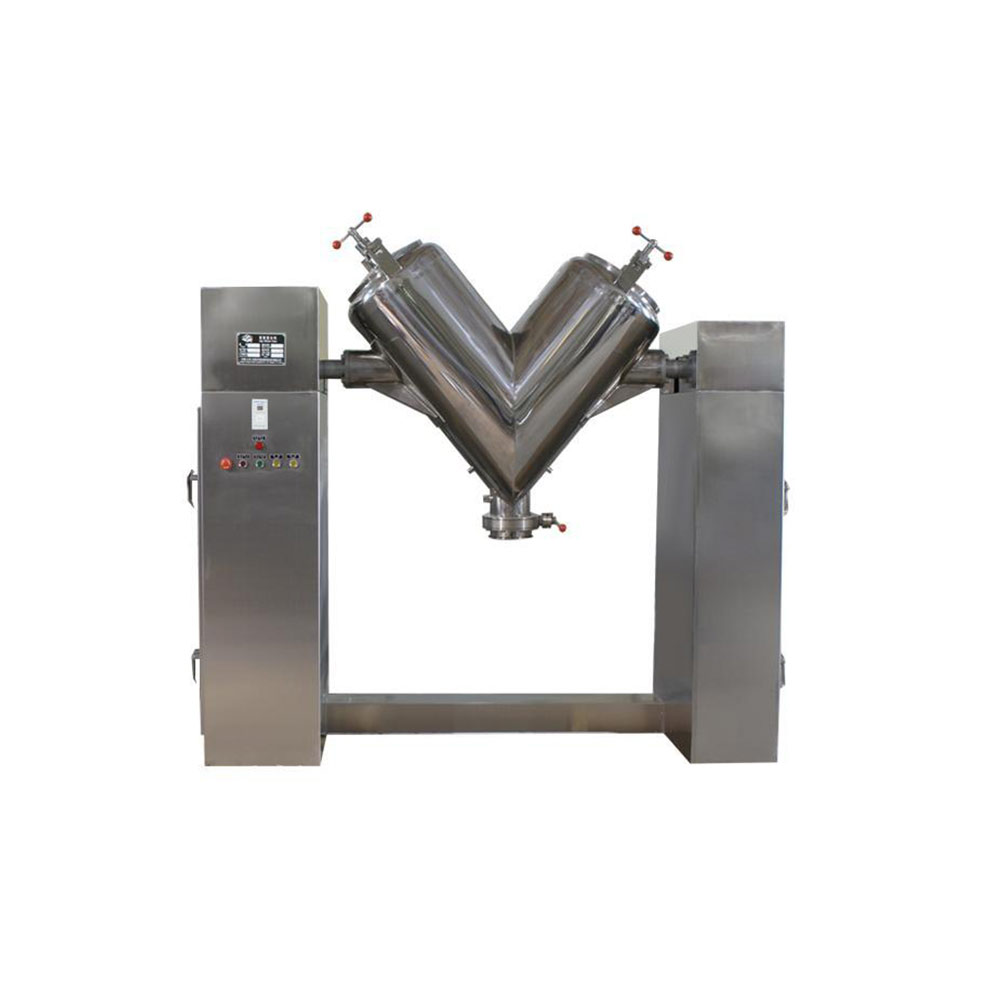Ask An Expert
Frequently Asked Questions
Yes, We can supply simple stand alone panels or automated PLC controlled systems. We normally install and test all controls on our mixers before they are shipped.
Yes, we normally test the mixers before they are shipped and mark out the wire need to connect on the control box.
We manufacture specialty mixing equipment for powder & bulk materials. Included are ribbon blender, plough mixer, conical screw mixer, twin shaft paddle mixer, V blender, double cone blender and other auxiliary equipment such as screw conveyor, quantitive auger filler.
We sell across the world, our cusotmers distribute 5 continents.
Share Us With Your Network
Producing uniform dry mixtures
New products, industry competition, and rising consumer expectations are creating a demand for more uniform, consistent dry mixtures. Understanding your ingredients is key to producing a uniform mixture. The ingredients’ characteristics and interaction with each other will determine both what mixer you choose and how you control the mixing process.
Dry ingredient mixers can use impellers (such as a ribbon mixer, the mainstay of dry mixing), multiple-motion agitators (such as a kneading mixer), or a gentle tumbling motion (such as a tumble blender) to mix ingredients. Your ingredients determine which type is best.
A ribbon blender’s ribbon-like mixing blades continuously carry most types of ingredients from one end of the mixer to the other, effectively dispersing the ingredients throughout the mixture. A multiple-motion mixer has agitators that counter- rotate, providing more aggressive mixing suitable, for in- stance, for dispersing fat into a cake mix. The action not only incorporates the fat particles, but reduces the particles so they flow better and mix more easily with the other ingredients. A tumble blender rotates end over end to gently tumble ingredients, suitable for mixing abrasive or friable ingredients.
No matter what mixer you choose, obtaining a uniform mixture means properly controlling your mixing process. Several control factors come into play, and most of them depend on your ingredients: ingredient selection, ingredient addition order, mixing time, temperature, and dust control.
Ingredient selection
The more similar your ingredients’ particle shapes, the better the ingredients will mix. When particle shapes for two ingredients are extremely different — for instance, spheres mixed with cubes -they don’t fit together well and tend to segregate. Although you can control this to some extent by cautiously mixing the ingredients in a multiple-motion mixer or a tumble blender, it’s better to buy bulk ingredients with compatible shapes or to process an ingredient so its shape matches your other ingredients.
Ingredient addition order
The ingredients’ particle characteristics will help you determine in what order to add the ingredients to the mixer. Typically, the more differences in your ingredients’ quantities and characteristics -such as particle size and density -the harder it is to achieve a uniform mixture.
Premixing
For ingredients with extremely different characteristics, you can eliminate mixing headaches by premixing one ingredient with other ingredients. This is especially useful with a minor ingredient.
When a mixture contains a minor ingredient and large quantities of other ingredients (such as an active ingredient in a pharmaceutical blend or a seasoning in a soup mix), the minor ingredient is typically critical to the product and often the most expensive component. However, the minor ingredient’s small quantity makes it difficult to mix uniformly with the other in- gredients. The minor ingredient can be lost before mixing starts (by becoming airborne) or during mixing (by becoming electrostatically charged and clinging to the mixer’s cover or agitator). During mixing, the minor ingredient can also migrate toward the mixer’s dead spots (for instance, in a ribbon blender’s bottom or near the trunnions in a tumble blender). By premixing, you can disperse the minor ingredient throughout another ingredient to ensure a uniform mixture.
Size
When two ingredients’ particle sizes are extremely different, the ingredients can separate and stratify because the smaller particles tend to migrate downward, a problem that can be exaggerated when the mixture is transferred. To take advantage of this natural tendency, add ingredients with large particles first and those with small particles last. Another way to prevent separation of some mixtures is to add a small amount of oil, either just after all ingredients are added or during mixing (for instance, by spraying oil into the mixer). This coats the smaller particles, aiding uniform mixing. To add an ingredient with very large particles (such as nuts in a brownie mix), avoid mixing the ingredient in the mixer and, instead, add the ingredient at the packaging stage.
Density
When ingredients have widely different particle densities, they also tend to segregate during mixing: The denser particles migrate downward through the lighter particles. To take advantage of this natural tendency, add denser ingredients last, on top of lighter ingredients. The denser particles’ down- ward movement will help them disperse into the other ingredients.
Moisture content
An ingredient with high moisture content can be dense and tacky, which can cause it to clump during mixing. Rather than add the moist or tacky ingredient to the mixer separately, mix it with another drier ingredient before adding the combined ingredients to the mixer.
Mixing time
Using the optimal mixing time for your ingredients will help prevent both undermixing and overmixing. Undermixing produces a mixture with unevenly dispersed ingredients. Over- mixing causes even greater problems: broken particles or segregated ingredients that have unmixed after mixing. For in- stance, if you add agglomerated ingredients to a mixture, over- mixing can either break up the agglomerates, which become so small they change the product’s texture, or cause the agglomerates to cluster together rather than disperse evenly throughout the mixture.
How you determine your product’s optimal mixing time de- pends on whether you’re selecting a new mixer or using your existing equipment, and on whether your product is similar to others you’ve mixed.
If you’re using an existing mixer and your product is similar to others you’ve mixed, you can base mixing time on what you’ve used for similar products. However, for a different product type or to achieve better mixing efficiency, you can determine your product’s optimal mixing time by testing. To test, place the ingredients in the mixer and begin mixing. Through- out the mixing cycle -from before the ingredients are mixed to after the ingredients are overmixed -take samples from throughout the mixer. Then test each sample to determine the mixing quality results at various intervals, and base your optimal mixing time on the best results.
If you’re selecting a new mixer, the manufacturer can typically provide mixing-time test data for products like yours in the mixer you’ve selected. Or the manufacturer can use your ingredients to run tests that determine optimal mixing time in the selected mixer.
Temperature
Controlling temperature during mixing is important: Heat-sensitive products such as pharmaceuticals, plastics, and foods can be damaged by melting or burning at high temperatures, especially when part of the mixture is caught in one of the mixer’s dead spots.
In other cases, how well some ingredients mix with others is strongly affected by the temperature during mixing. The wrong temperature -resulting from either the mixing itself, which creates friction between the ingredients and the equipment, or from other factors -can change a mixture from free-flowing 0-0 to cohesive and affect the final product’s performance. Over mixing can increase such problems.
There are several ways you can keep a mixture cool. For instance, to prevent a solid shortening in a food mix from melting and greasing out (turning the dry food mix into a dough), you can add crushed dry ice to the mixer before adding the shortening. Or to achieve better temperature control and simplify the operation, you can inject liquid carbon dioxide into the mixer; this is easier than adding dry ice, but is also more expensive. In any case, take care not to overcool a mixture that contains shortening, because this can create cold, hardened shortening pellets that even long mixing times can’t break apart. With other temperature-sensitive ingredients, you can use the following techniques:
• Precool the ingredients by storing them in a cold room before mixing begins.
• Use a mixer whose agitator or housing is cooled with water or a refrigerant.
• Reduce the mixing time (if this is possible without affecting mixture quality).
• Use air conditioning to cool the area near the mixer.
Dust control
Mixing can produce large amounts of dust, which can create safety and sanitation problems in your plant, as well as product quality problems. For instance, as a mixture cools, the mixture becomes lighter and small particles can become airborne. To prevent these problems, make sure your mixer cover (including seals and gaskets) fits properly, use the appropriate dust collectors, keep their filters clean, and use adequate ventilation. Depending on your mixture, you can also add a small amount of oil during mixing to keep dusting down.

